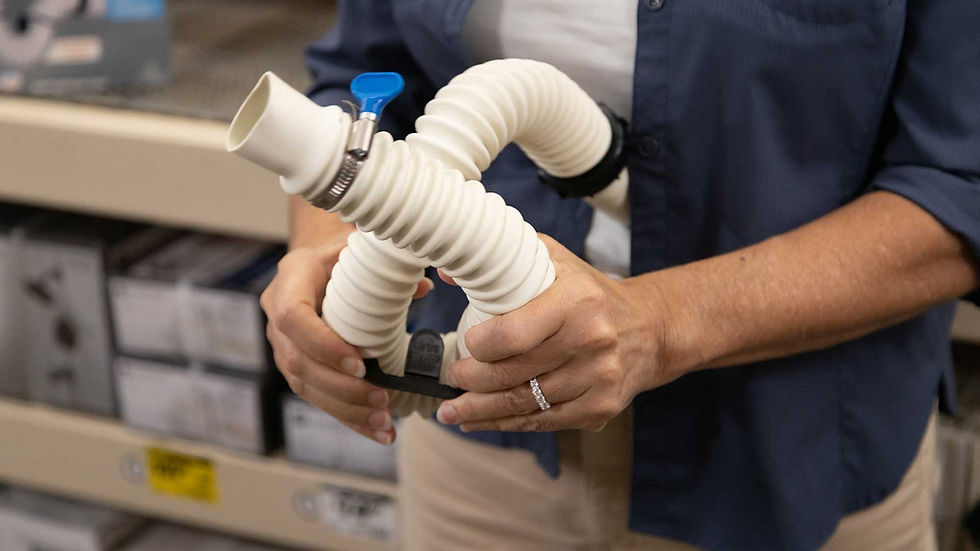Products You Can Buy at Home Centers That Violate Building Codes in Most Areas.
- Dale P.
- Dec 19, 2019
- 3 min read
Updated: Mar 9, 2023
Believe it or not, some items sold at home centers may not meet local building codes. National, state, and local regulations differ depending on where you live. Home centers don’t limit what they sell versus local building codes, so it’s up to you to verify which products meet code and which ones may fail an inspection. Here’s a list of the most common products that may not pass with your local building inspector.
Circuit Breakers

Circuit breakers
You’re adding a new circuit for a basement family room, and grab a standard circuit breaker off the shelf at the home center. Even though it’s compatible with your electrical panel, chances are it won't pass during an inspection. The National Electrical Code now requires arc fault protection in all living spaces. Since most local authorities have incorporated those changes into their building code, you’ll have to install an arc fault circuit breaker when adding additional circuits to your house.
It's also a good idea to purchase the same brand of breaker as your panel. While other brands may fit, the manufacturer of your panel may disapprove of their use, which could also be flagged during an inspection. Tandem breakers may not be allowed in your panel either and should be verified before installing one. When in doubt, we recommend hiring a qualified electrical contractor to perform the work.
Flexible Dryer Vents

Flexible plastic or foil dryer vent
Most stores sell it even though it violates the building code. Vinyl or foil venting material is a safety hazard because it can start on fire if overheated. The correct material to use is rigid or semi-rigid piping. It's also essential for the dryer to vent to the home's exterior, especially if it's a gas dryer!
S-Traps

Sinks in older homes are usually plumbed with an S-trap. Code has changed over the years and now requires the use of P-traps. It was found that S-traps can siphon water out of the trap and allow sewer gas to enter the house. P-trap should be used when replacing an older S-trap to meet new code requirements. To make it confusing, stores still sell S-traps even though they are no longer allowed.
Standard Outlets

Standard electrical outlets
Home centers still sell standard outlets, but they don’t meet the current building code. Tamper-resistant outlets with a “TR” stamp on the face are now the required. TR outlets have spring-loaded shutters that don’t open unless both plug prongs are inserted simultaneously. This lockout feature prevents children from sticking pointed objects into the outlet. TR outlets should be used anytime you add or replace an outlet.
Exterior outlets in "wet locations" also need the "WR" stamp on the face. This stands for Weather Resistance and is designed to perform in damp locations. Remember to add GFCI protection when needed!
Standard Hose Bibs

Hose bib without a backflow preventer
Today's exterior hose bibs require a backflow preventer (also called a vacuum breaker) to meet the current building code. If you’re replacing an old hose bib, we recommend buying a unit with a built-in vacuum breaker. The vacuum breaker is designed to prevent dirty water from being cross-contaminated with the water inside your home.
Weather Resistant Covers

Weather Resistant covers for outdoor outlets.
Building code now requires "In-Use" covers that prevent water from reaching the outlet while a cord is plugged in on all exterior outlets located in a "Wet" location. This means if the outlet is not over a covered area such as a porch, it requires an In-Use cover. Older-style snap covers are still sold in stores, so make sure to purchase the correct cover for your outlet.
Also, the outlet must have GFCI protection and be weather resistant with a “WR” stamp on the face.
Flexible Traps

Flexible or Corrugated Traps
Drain pipes must be smoothed-walled inside to prevent them from becoming plugged by hair or other debris. In addition, the corrugated sides of the piping can slow the water flow, allowing gunk to collect inside. Skip the headache and leave these gimmicky products at the store.



Comments